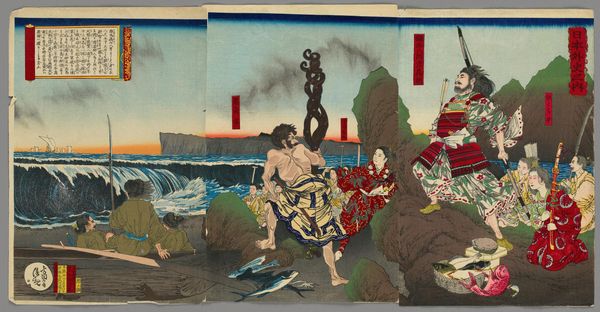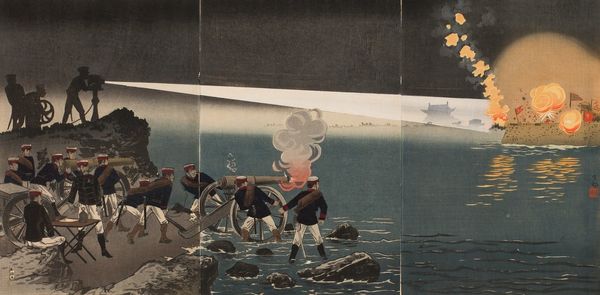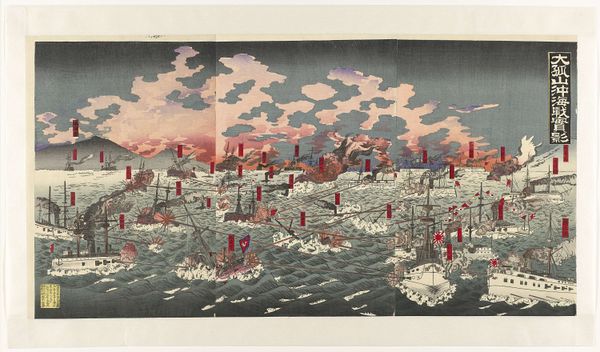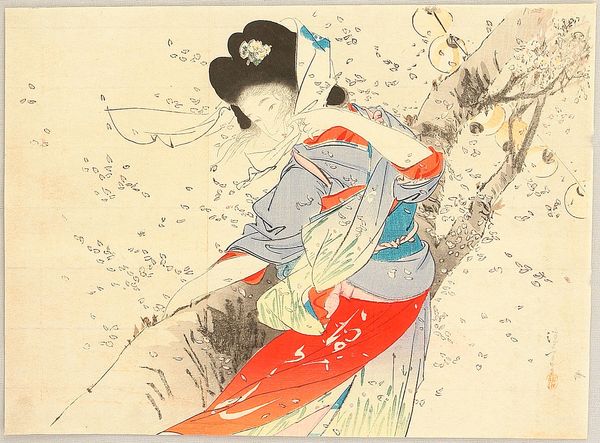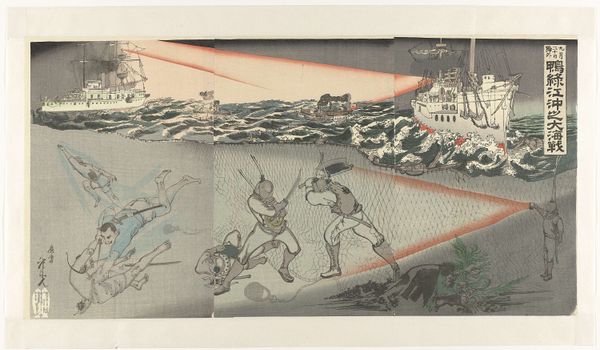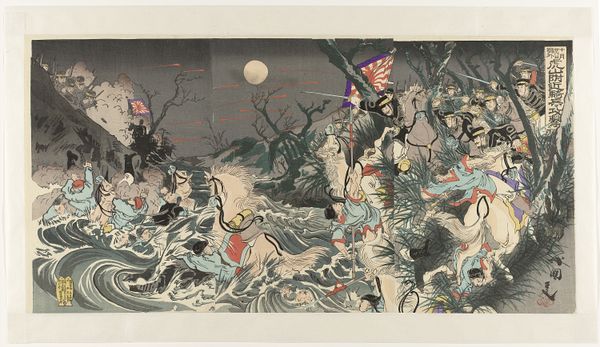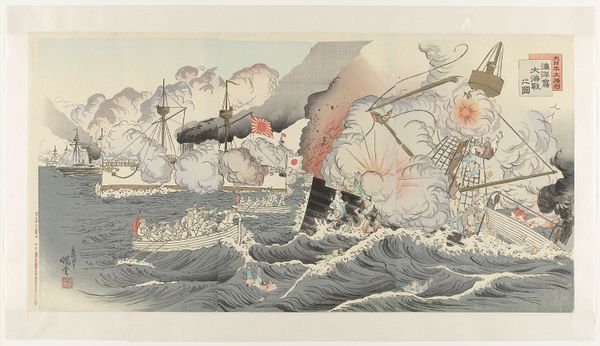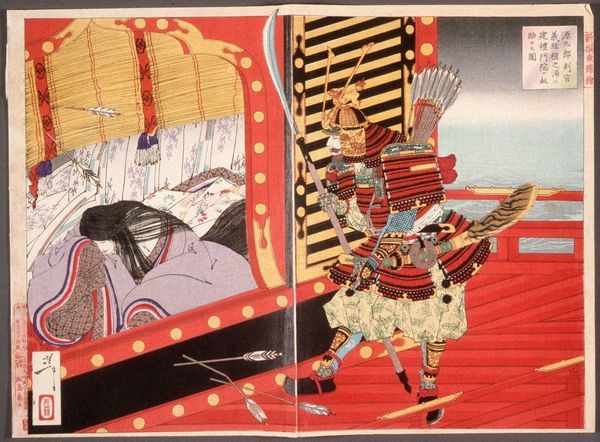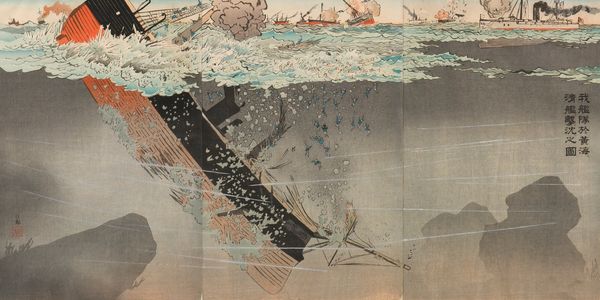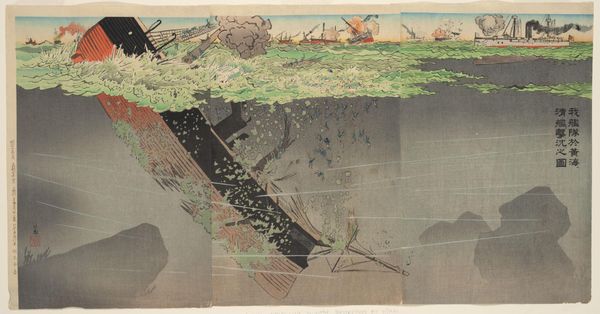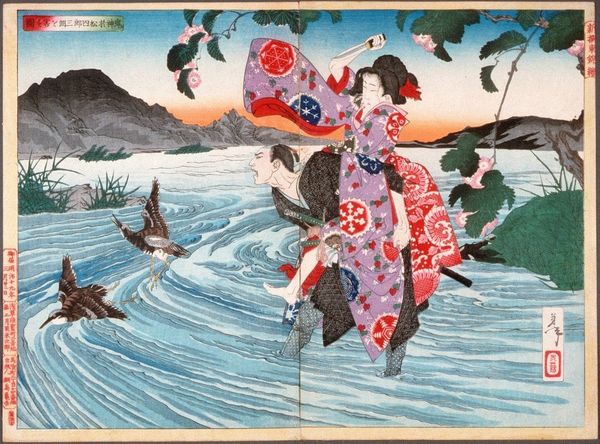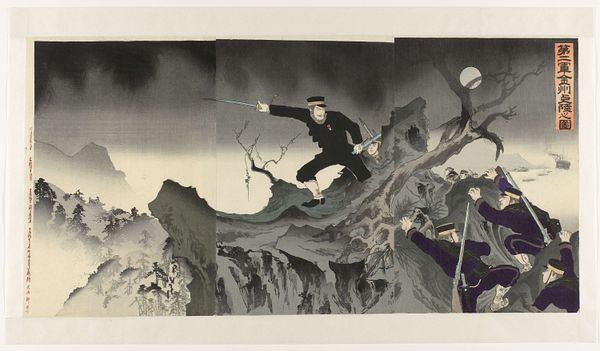
Actors Ichikawa Danjuro IX as Nasu no Yoichi Munetaka and Nakamura Fukusuke IV as Tamamushi Gozen 1885
0:00
0:00
Dimensions: 37.2 × 72.4 cm (14 5/8 × 28 1/2 in.)
Copyright: Public Domain
Curator: Ah, an absolutely captivating work by Toyohara Kunichika, created in 1885. The Art Institute of Chicago holds this woodblock print, titled "Actors Ichikawa Danjuro IX as Nasu no Yoichi Munetaka and Nakamura Fukusuke IV as Tamamushi Gozen." It depicts figures from Japanese folklore, rendered in Kunichika's signature style. Editor: My immediate reaction? It's theatrical, wouldn't you say? Like a scene plucked right from a stage play. The colours practically vibrate off the paper! Curator: Indeed! Kunichika was known for his theatrical prints. Here we see actors in character, referencing established narratives. It speaks volumes about the cultural significance of theatre in Meiji-era Japan and the public's engagement with historical dramas. Editor: And the dynamism! That warrior looks like he's bracing against the roughest sea, arrow taut. Is he about to strike, or has he just let one fly? The tension's palpable. Though, I can't help but think of the irony; these scenes were created using the most deliberate, precise methods. It's interesting how rigid craftsmanship delivers fluid impressions. Curator: Precisely! Ukiyo-e prints often presented controlled, idealized versions of events or people, which were then widely distributed, reinforcing certain social and political norms. The very act of creating and disseminating such imagery reflects the period's values. Note also how gender roles and identities were depicted on the stage and in this art. Editor: That’s interesting when considering how the water in the image has been transformed into these lovely wave crests. Like icing almost, as a stylistic feature. Curator: The woodblock print medium also speaks to that! Think of how this piece reflects Japan's growing integration with global markets and international exchange during the late 19th century. Japanese art started impacting the Western world as well as itself. Editor: Hmm, global integration and historical theatre, all swirled into one dynamic image. I won't look at the seas the same for a bit. Curator: A powerful way to sum it up. A fleeting and captivating look into a bygone world and time on stage.
Comments
No comments
Be the first to comment and join the conversation on the ultimate creative platform.
